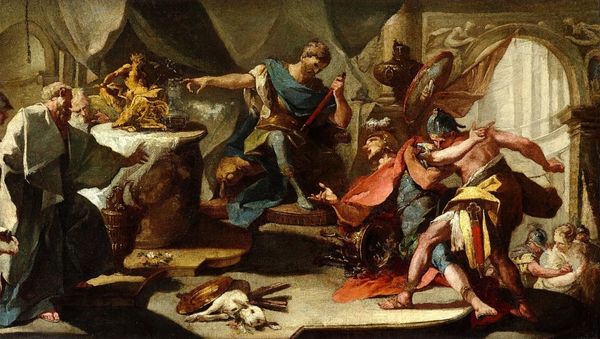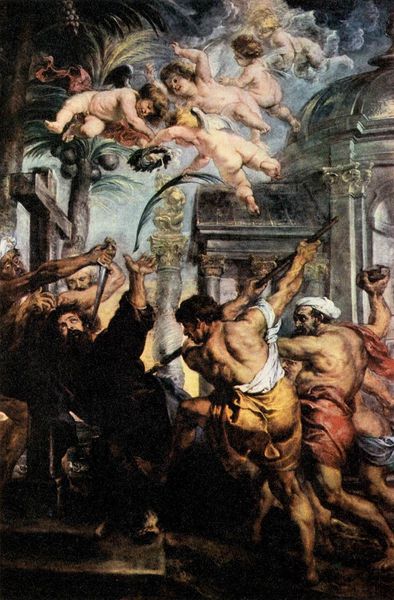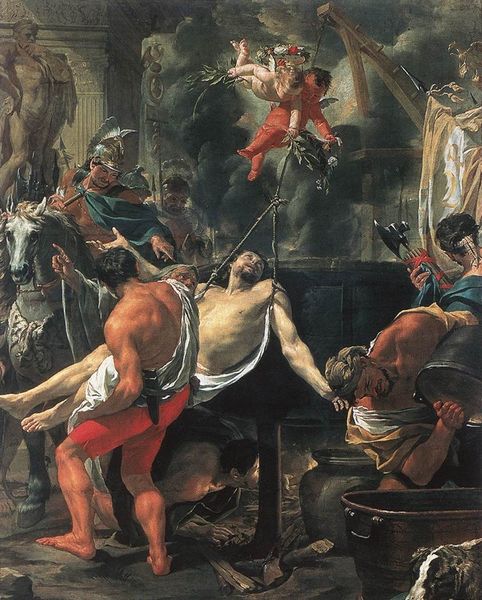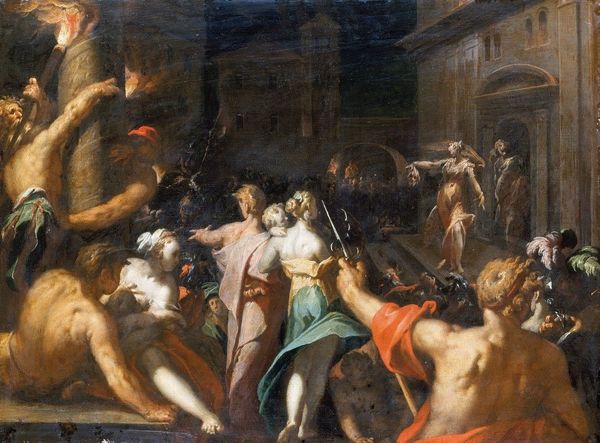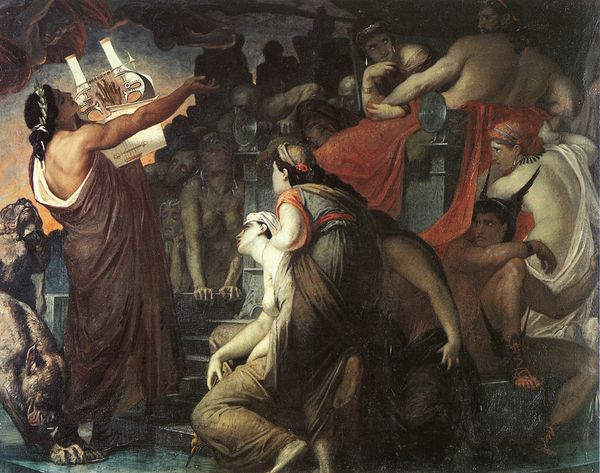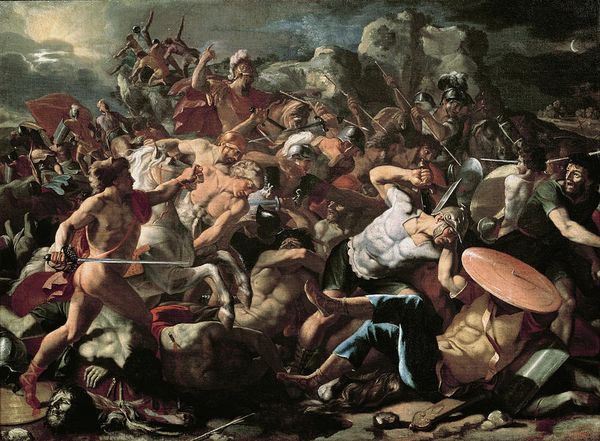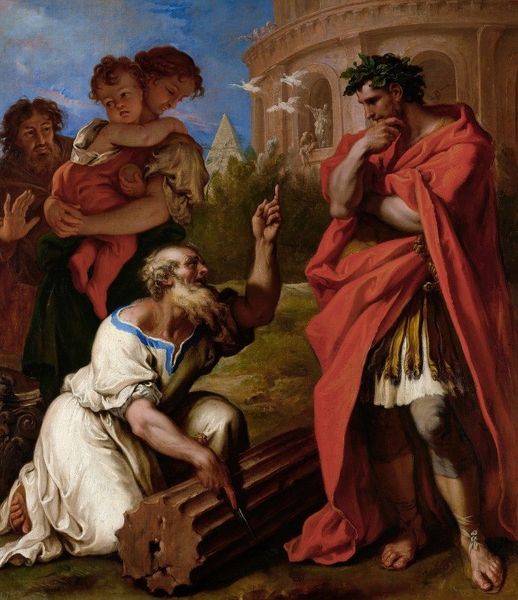
painting, oil-paint
#
baroque
#
painting
#
oil-paint
#
painted
#
figuration
#
mythology
#
painting painterly
#
history-painting
#
academic-art
Copyright: Public Domain: Artvee
Giovanni Battista Tiepolo painted ‘The Death of Hyacinthus’ with oil on canvas sometime in the 18th century. Tiepolo was working in Venice, a Republic renowned for its carnivals, the opulence of its noble families, and its commitment to artistic patronage. This painting, typical of the Rococo style, illustrates a story from Greek mythology in which the god Apollo accidentally kills his lover, Hyacinthus, during a game of discus. But why stage a tragic scene as a spectacle of wealth and beauty? The answer perhaps lies in the relationship between the nobility of Venice and the artists they supported. Tiepolo’s success depended on commissions from rich families keen to decorate their palaces with mythological scenes. Such images served as status symbols, indicating their owners' learning and refined taste. We can appreciate the exquisite skill of the artist, while also understanding that the painting is inseparable from the social and economic conditions in which it was made. To understand the public role of this art, historians might look at sources such as letters, inventories, and biographies to reconstruct its original context.
Comments
No comments
Be the first to comment and join the conversation on the ultimate creative platform.
